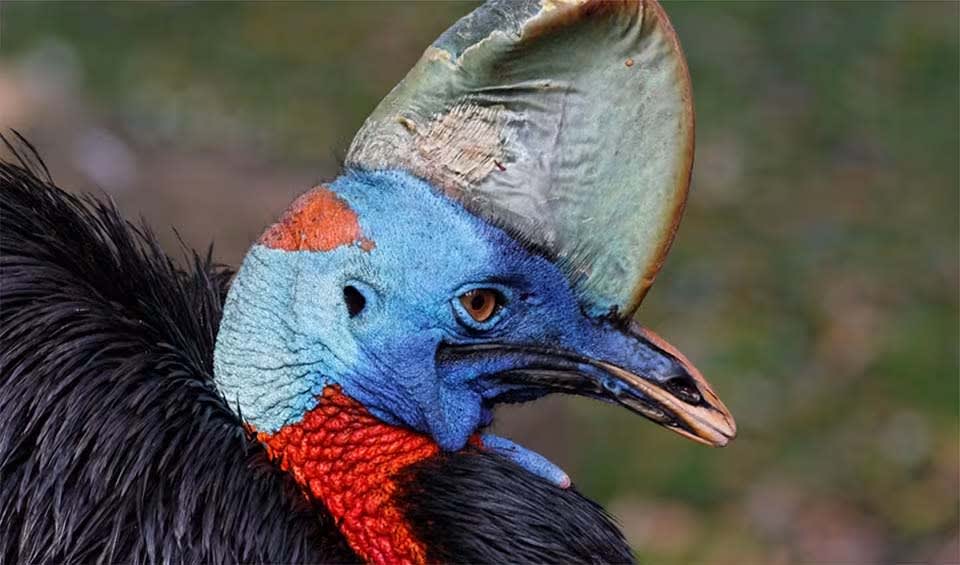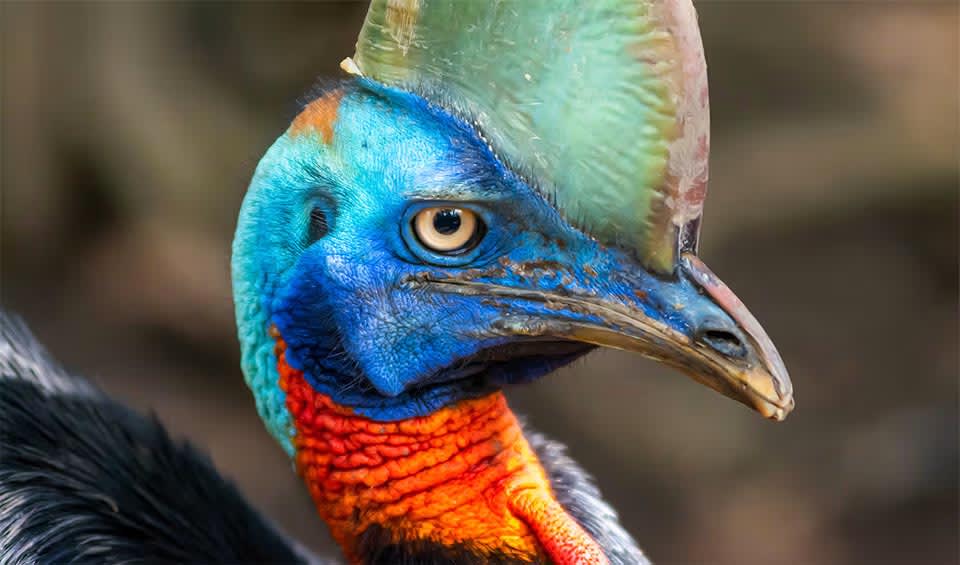Casuarius – Cassowaries
Fruit-eating, bad-tempered birds occupying rainforests and the savannas of Australia and New Guinea
The cassowaries are native to the tropical forests of New Guinea (Papua New Guinea and Indonesia), nearby islands, and northeastern Australia. There are three species of this magnificent bird, each with unique characteristics and adaptations.
These birds stand out due to their striking appearance. They are enveloped in coarse, hair-like feathers that are predominantly dark, aiding in camouflage within the dense forest undergrowth. The chicks, however, are born with a striped pattern that gradually transitions to adult coloration as they mature.
Cassowaries possess a vividly colored head and neck, displaying hues of bright blue, red, and orange, which vary between species and may play a role in communication or mate selection. Their facial features are crowned with a casque—a helmet-like structure—whose exact purpose remains a subject of scientific intrigue but is hypothesized to be used for pushing aside forest underbrush or as a status symbol among cassowaries.
Regarding their anatomy, cassowaries boast a short and robust bill, curved for foraging. At the same time, their wings are rudimentary, remnants of their evolutionary past, suggesting a lineage that once could fly but has since lost that ability. Instead, cassowaries have evolved strong, muscular legs with three-toed feet. The innermost toe bears a formidable dagger-like claw, up to 12 centimeters long, which can be lethal when the bird is threatened or cornered.
Cassowaries lead a solitary existence and are known to be fiercely territorial. They are primarily frugivores, meaning their diet consists mostly of fruit, which they find on the forest floor or pluck from low-lying branches. By consuming fruit and excreting the seeds over great distances, cassowaries play a critical role in their ecosystems as seed dispersers, contributing to the health and regeneration of the forest.
Species in this genus
Dwarf cassowary
The dwarf ratite from the mountain forests
Northern cassowary
Single-wattled yellow-necked one-horned ratite
Southern cassowary
This heavyweight champion is the heaviest Asian and Australian living bird



